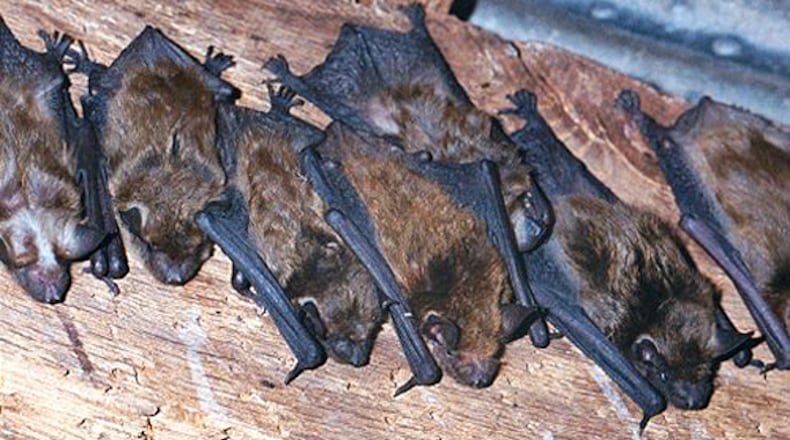I thought I had seen some bats zipping about during the evening in my neighborhood on the outskirts of Decatur and I was right. The other day I spied the service truck of a “wildlife removal” specialist parked in a neighbor’s driveway.
I walked over to have a chat with the specialist, Nick Yohn, who works for Trutech, an Atlanta wildlife removal firm. He said he had found dozens of little brown bats roosting in the neighbor’s attic and will follow standard procedures to remove them.
Yohn explained that all of Georgia’s 16 bat species are protected by state law and it is illegal to kill or harm them. Two species -- the gray bat and the Indiana bat -- are on the federal endangered species list.
Bats provide a valuable ecological service by consuming vast quantities of night-flying insects, many of which are significant pests to farmers, gardeners and homeowners. One little brown bat alone can catch more than a thousand insects in an hour.
It is not uncommon to find scores of little brown bats and two other species -- big brown bats and Mexican free-tailed bats -- congregating in attics this time of year. Most of them belong to maternal colonies in which individuals give birth May through July.
Understandably, many homeowners are petrified to discover they have bats in the attic. While the bats themselves are for the most part harmless and even beneficial to homeowners, their droppings can build up over time and create unpleasant odors. Also, though it happens very rarely, some bats can spread rabies through bites.
The Georgia Wildlife Resources Division of the Department of Natural Resources notes that in most situations, bats-in-the-attic problems can be resolved with no harm to the animals. Several licensed wildlife removal companies perform the service.
Bats should be excluded from a house by sealing openings and using one-way doors that allow the bats to go out in the evening to feed but do not allow them to pass through the other way, says the DNR. Exclusions should be done only before May 1 and after Aug. 15 to avoid trapping young bats that cannot yet fly.
Unfortunately, bats, especially little brown bats, are facing their own scary situation: the growing threat of white-nose syndrome. The disease already has caused the death of more than 1 million bats. It hasn't been documented in Georgia yet; the WRD has a plan to combat the disease, should it spread to the state.
In the sky: The South Delta Aquarid meteor shower will be visible this weekend and all of next week. It will reach a peak of 15 meteors per hour on Thursday night, said David Dundee, astronomer with Tellus Science Museum. Look to the southeast from midnight until dawn.
The moon is in last quarter Saturday. Mercury is low in the west just after dark. Mars is low in the east about three hours before sunrise. Jupiter rises out of the east after midnight and will appear near the moon tonight. Saturn is high in the west at dark and sets in the west around midnight.
About the Author
Keep Reading
The Latest
Featured

